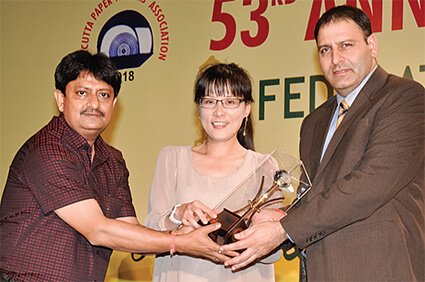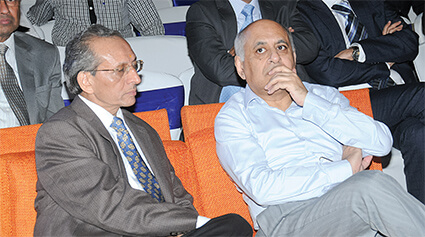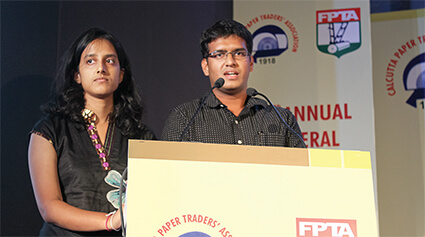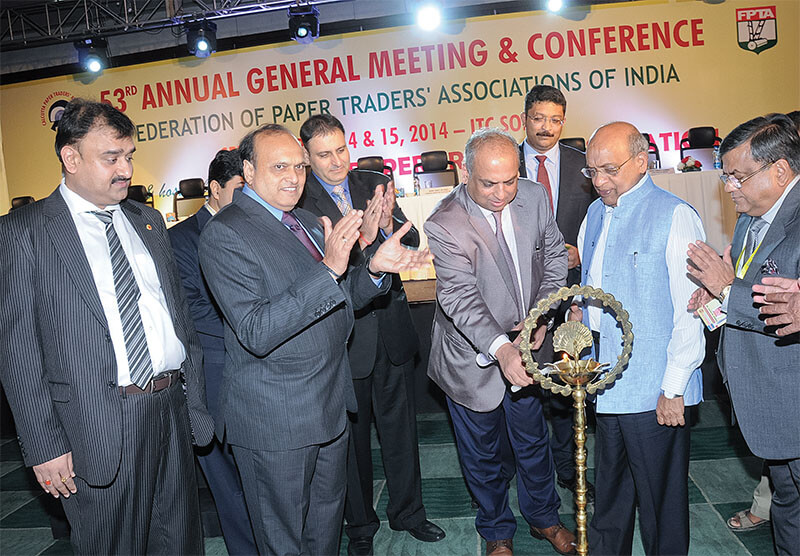
The 53rd AGM of Federation of Paper Traders Association of India (FPTA) was organized by the Calcutta Paper Traders Association (CPTA) at ITC Sonar, Kolkata. The conference set a cogent stage for vibrant exchange of ideas and opinions on myriads of pertinent issues the Indian paper industry is facing. The avant-garde of the Indian paper industry underwent solution-finding focused group discussions to solve many technical riddles of the industry as well as to deliberate upon what prospective course of action the industry must take. Paper Mart was a vigilant spectator of the entire episode covering important minutes of the meet. Here, we bring you a pithy report:
The paper and pulp industry is expected to grow over 4 to 5 million tonnes with a growth rate of 6 to 7 percent. Owing to the emergence of e-Commerce and increasing integration of the conventional market with digital marketing tools, paper industry, along with mill owners and traders, is witnessing a buoyant upsurge in the opportunities hitherto unknown to it. The rising demand of sophisticated packaging has created a potential market base for the industry.
The government and resolute leadership have already created a positive speculation in the economy, and the entire economy seems to be well riding on it, at least for now. Promised relaxation in trade related obstructions and proposal of new tax regime would definitely boost the international supplies. The paper and paper board industry, on the sunny side, is quite upbeat for the expected growth which would, of course, be contingent upon minimizing the global differences in terms of consumption and production, and vice-versa.
At the meet, the inadequacy of raw material was one of the central themes discussed upon in length. The issue saw many furrowed foreheads and deep meditation to resolve the imminent dearth of raw material confronting the industry. However, the news that India’s Asian associate nations are investing in the industry is a respite and will most likely minimize the inadequacy.
India is fast becoming the global hub for quality printing; Indian paper market is thus experiencing a paradigm shift in terms of cost, production, demands and export. The fact is one suggestive indicator for India to emerge as frontrunner on global pulp and paper arena.

Understanding and Assessing the Industry
The printing industry is expected to keep riding on its growth trajectory by virtue of the existing and proliferating numbers of presses in the country. Speaking on relevant issues such as the myth that paper destroys forests, seminars on GST & Direct Tax Code, better financial understanding and assessment of the industry, and modernization of their operations, Mr. Krishnendu Bhattacharjee, President of FPTA underlined his role and the operations he will undertake during his tenure. He said, “India is the second largest print market in the world. There are approximately 250,000 printing presses in India and strong growth in the printing industry is expected to continue to fuel the demand of paper. And, as the new president of FPTA, I have set certain objectives on the association’s behalf.”
He continued, “The objectives are: to create public awareness to fight against the myth that paper destroys forests, to implement ordeals to increase margin of profit to survive ourselves and the next generation. Apart from this, a recovery cell will be initiated by all affiliated associations to hold seminars on GST & Direct Tax Code that will give us a more clear idea of our finances and position in the global economy.”
“Meeting and interaction with IPMA and other small paper mills associations will be done on a consistent basis. Regular Q&A sessions will be conducted to have a better understanding and assessment of the industry. The Paper Industry has achieved the target of 12 million tonnes per annum, which is three percent of world market size. However, for consistent growth, the paper industry will have to modernize their operations,” he concluded.
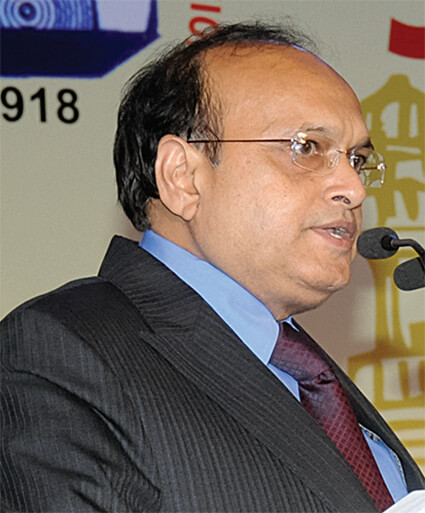
Trade Bottlenecks
Trade and problems are interwoven intricately yet are not insurmountable. Expounding on the topic, Mr. Rajkumar Bindal, Ex-President FPTA said, “Trade and problems have been two faces of the coin. Trading issues like financial constraints, minimal gains, competition, market risks, multiple tax structure and many other such issues are being faced by us now and then. Added to it are the issues related to state and center level along with some internal hiccups. As president, I had the privilege to visit pan-Indian paper trade associations, where I observed that in states with less competition, more of the youth is participating in paper trading, as compared to other states with more competition. Here I would like to state that unless the new generation is allowed to participate in the paper trade, the growth of our industry will be stand still. We need to neutralize self competition and pave paths for the new generation to merge in.”
On government’s pro-active steps to address the bottlenecks faced by the industry, Mr. Bindal expressed his relief on the new resolutions the new government is likely to introduce in the interest of the paper traders in India. He elaborated, “We had been tangled in governmental controversies which had delayed our actions in solving trade issues. We have proposed to the new government that GST should be effected with minimum rates which will relax the heavy tax burdens. The finance minister promised that one percent of our tax revenues will be reserved as fixed deposits that will be duly paid at the time of retirement.”
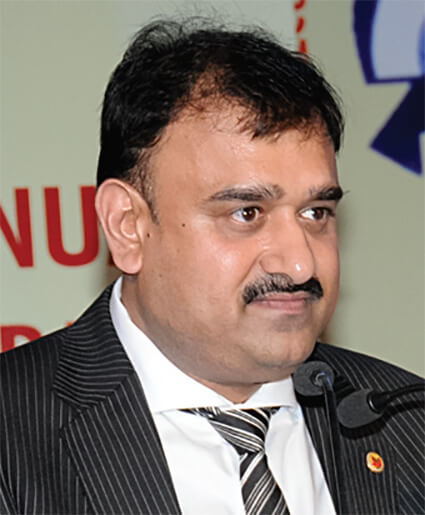
Low Paper Consumption
Speaking on the low paper consumption per capita in India, Mr. Bindal said, “Our role is to improve the rate of paper consumption in India. If we look at the numbers, we find the per capita consumption in America is 256 kg per person, in Japan 215 kg per person and the whole world paper consumption averaging at 57 kg per person. In contrast, our country’s per capita paper consumption stands at just 11 kg per person. Given the fact that we comprise 17 percent of the total world population, our paper consumption stands at mere 3 percent of the total world consumption, which clearly indicates how lagged behind we are!”
Speaking on the topic of low consumption, Mr. Jyoti Bajaj, Managing Director, Krishna Tissues Ltd. said, “The Indian paper industry has an annual turnover of Rs. 40,000 crores. But, our per capita consumption is very low in comparison to the global average consumption of 57 kg. In fact, in the last five years due to economic growth the Indian paper consumption has the steady growth of 8 percent. India is now self-sufficient in various varieties of paper and paper board. We can classify Indian paper industry into three segments wherein paper board is the largest segment accounting for 45 percent of the total domestic paper demand followed by writing & printing 35 percent and newsprint 20 percent. I want to stress a point that if our per capita consumption increases by 1 kg, the total demand will increase by 1.1 million tonnes of paper.”
He added, “The consumption of paper and paper board is expected to be doubled by 2020 from the current value of 12 million tonnes. The paper and paper board has witnessed a radical shift in the last decade. Strong consumer demand for packaged goods is fueling high growth in industrial grade paper and paper board. This is largely led by growing disposable income and lifestyle changes.
“Even though, FMCG companies are grappling with a single digit growth of 9 percent. There is massive investment in the printing industry having a CAGR of 14 percent. India is emerging as a global hub for high printing job at competitive cost.
“The future of paper industry also lies in the recycled pulp because cutting forest is not seen as a viable option for long term due to environmental constraints. In other countries, it is now mandatory to mix recycled pulp with the virgin pulp. The innovative idea of using corrugated furniture has given new heights to the paper demand. Now, paper is not only meant for writing, printing, packaging and shopping bags. Recycling has opened numerous newer and noble uses of paper.”
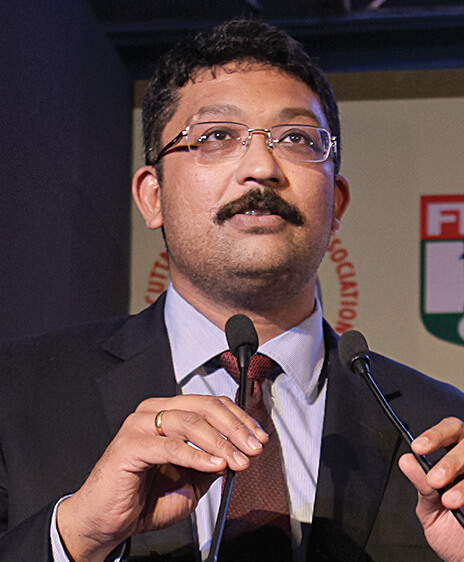
Motivating the Industry Pace
Mr. Rampraveen Swaminathan, President, International Paper India, spoke about motivation the paper industry needs to thrive in the competitive global market; he said, “There is an old Chinese saying ‘living in the interesting times’ and it supposedly holds true for the Indian paper industry seeing the last decade. The combination of economic slowdown, inflation, lower demand, and volatile investment environment has obviously created a long shadow on our paper demand. The industry is also struggling with fiber supply especially on the virgin pulp side which is an additional pressure on the industry. It is certainly an interesting time, one which requires an industry across its value-chain, starting with the mills, down the traders, distributors and resellers to respond to it. It is an environment where the fittest will survive as we look out for next decade, or so. It is important that the industry as a whole focuses on few critical things ensuring that we are healthy and growing.
“As per my perspective, we need to focus on three things, first is the continuous investment in sustainable and environment friendly business practices. The challenge to that is the fragmented mill systems across India on which we need to invest and continue expanding.
“Secondly, we need to expand in demand creation which isn’t a challenge if the mills and the distribution channel work hand in hand. The mills have to do their part. I think it is also important that distributors and traders invest in not only doing what they are doing today, but start to create value by up-selling products by providing more complete solutions. So, as we do our things, we also have to think on how to create new sources for demand for paper and how we can invest in selling more value and not just providing logistics or day to day sales support. If we want to create a long term future, focusing on these things would be an absolute necessity.
“Thirdly, as we move on, the underlined demand drivers are extremely solid. As some of the speakers already mentioned that we are still an un-served market for paper and packaging. Therefore, both of these should seek continuous attention and grow over the next five to ten years.”
Shedding light on government’s initiatives and driven demand because of it, he said, “The new government shows greater optimism on demand growth and the new economic policies should translate into stronger demand. The last few expansions in the industry are done on first-rate technologies that will enable us to make better products for customers.
“So there is still a great room for optimism despite challenges that we have seen. We are extremely confident that there is huge opportunity in our country and demand will materialize. This opportunity is highly contingent on the strength of the industry as a whole. The Indian trade and distribution fraternity is one of the most significant positive differentiators of the Indian paper and packaging as compared to the other parts of the world. I think aggression and the entrepreneurship are absolutely critical to keep us going.”
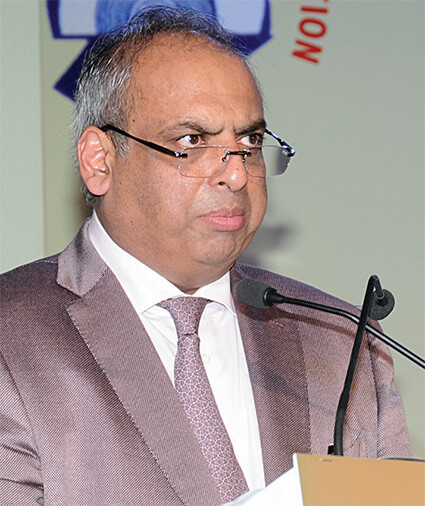
Growth on Ascending Trajectory
Mr. Yogesh Agarwal, MD and CEO, Ballarpur International Graphic Paper Holdings BV stated, “With this forthcoming election the industry was hoping that at least one of the parties among the several parties should get the absolute majority to bring about the policy changes and steer the Indian economy toward the growth. It is too early to comment, but we are seeing the revival of the Indian economy and the confidence of the industry is coming back. Markets and FIIs have responded well and industries have started achieving their growth numbers. The GDP of 5.7 percent in the second quarter of 2014 was reported highest in the last 2.5 years. Paper and pulp industry in India has grown tremendously, but the consumption rate sets an alarm for the industry.”
Speaking about writing and printing paper scenario, he said, “Asia has become the center of gravity in the last few years. The expected share of Asia excluding Japan in writing and printing grades is approximately 31 percent in the year 2014. On the other hand, large markets like Western Europe, North America and Japan are posting negative growth Y-o-Y from 2007 onwards. Among these three markets writing and printing has lost 20 million tonnes over last six years. To put this number in perspective every year since 2007, volume equivalent to Indian writing and printing is being shaved off from the world market.”
He added, “This story is replicated on the pulp side too, where market pulp manufacturing facilities have shifted towards Latin America between 1990 and 2014. Latin America has increased the capacity to 490 percent i.e. from 3.7 million tonnes to 22 million tonnes in 2014. On the consumption side of the market pulp, 80 percent of the demand growth has been contributed by China and almost 100 percent by developing countries. Pulp has moved closer to forest and paper to markets. Fortunately, we are working in the market that is growing fastest as compared to other nations. The history of this industry belongs to Scandinavian countries, North America, Canada, and Australia, but the future belongs to India.
“However, this new alignment of the consumption in market is different from producing markets. Major raw materials have given immense prominence to the weightage of other variables like exchange rates, shipping cost, plantation cost, interest rates, capital remuneration, etc. which are becoming extremely important in the new whole scheme of things.”
In the long discussion covering almost every issue, Mr. Agarwal said, “India is a great story when it comes to market, but India is not a great story when it comes to raw material and capital. There is an ardent need that we bring in cheap capital and raw materials to service the Indian market. Major markets mainly China, Japan and India are forcing several Asian companies to secure the raw materials on a long term basis, either by investing on plantations, importing wood chips from low costs base. As a result, countries like Vietnam and Thailand have become leading suppliers of wood chips to China, Japan and South Korea leaving the bigger players like Chile, Australia and South America far behind. The export of wood chips from Vietnam has gone up from 3 million tonnes to 7 million tonnes, subsequently from Thailand it is 1.8 million tonnes to 3 million tonnes. To secure the raw material, plantation acquisitions have become a logical step owing to the appreciation in the plantation valuation.”
“There has been considerable investment for the last five years. The industry has made investment of USD 4 to 5 billion in the last four to five years which is almost the same to what the industry had invested in the last two decades. Though, this investment has gone toward the technology up-gradation, capacity building and backward integration in the form of pulp mill. With the investment cycle over for the most of the players in the industry, it is the consolidation time,” Mr. Agarwal said.
Mr. Agarwal went on, “The deficiency of raw material has shaken the cost equation rudely. In India, wood prices have almost doubled in last few years and competition for raw material has intensified to the unprecedented levels. For the first time, in the history of the Indian paper industry import of wood has become a reality. Wood is being transported across the length and breadth of the country.
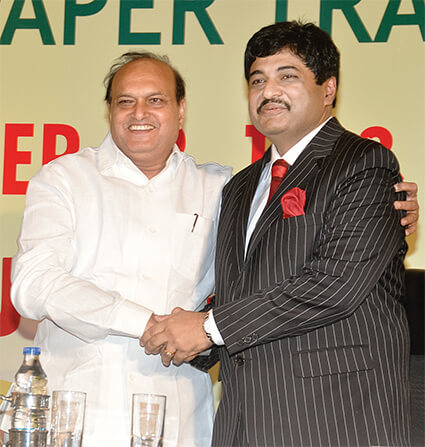
“Indian paper industry will also see some fundamental changes on the market side. Publishers and Printers would start valuing the convenience of buying, JIT, large SKUs and availability of special SKUs, etc. Market would seek distributors having their own converting facilities, having their own brands and majority of their business will move to e-platform.
“I would like to conclude by saying that while Indian paper industry continues to grow by 6-7 percent Y-o-Y, we can expect structural changes from the point of view of sales, technology, productivity and interface etc. Such structural changes obviously challenge the existing business model, but on the other hand, open up the new range of business activities for progressive players either from India, or abroad,” Mr. Agarwal thus concluded.
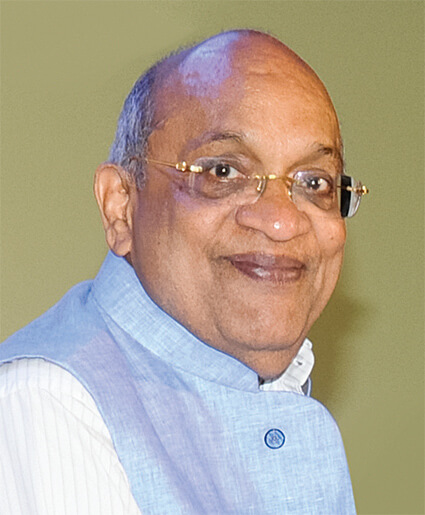
Tools of Recovery
Speaking on tools to overcome the issues faced by the paper industry, Mr. R. S. Agarwal, Joint Chairman, Emami Group of Companies, stressed on the importance of PR management and image-building; he said, “There is an urgent need to do ‘Image Building’ of the paper industry. This can be done by engaging consulting giants on how to achieve substantial growth, in which our paper mills are lagging behind. Unless we upgrade and study the potentiality lying in the future, we cannot grow as an entrepreneur, or as an industry. There is an ardent need to understand the difference between the growth drivers in India and other countries. This will help us to fill in the gaps, and we can adopt the best practices that have been success there. Thus, to upscale growth in the paper mill industry, hiring excellent PR agencies will be a great step toward forming the strategy for a long term growth.”
